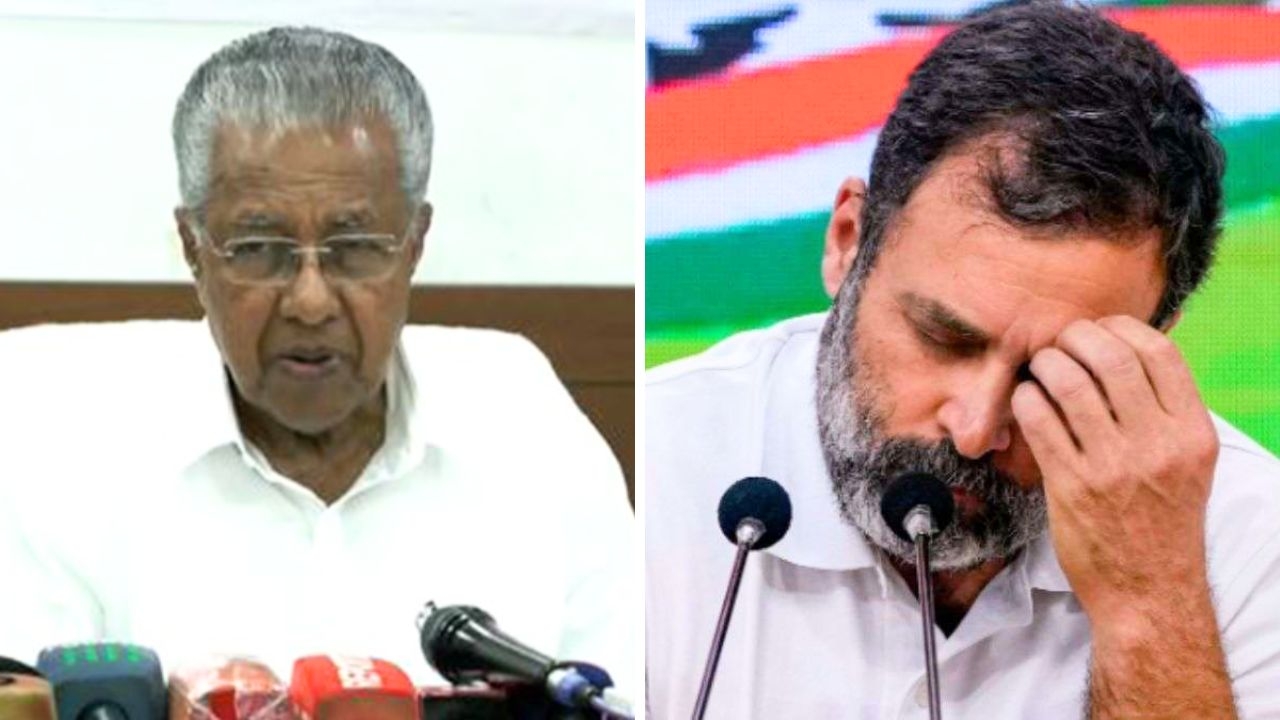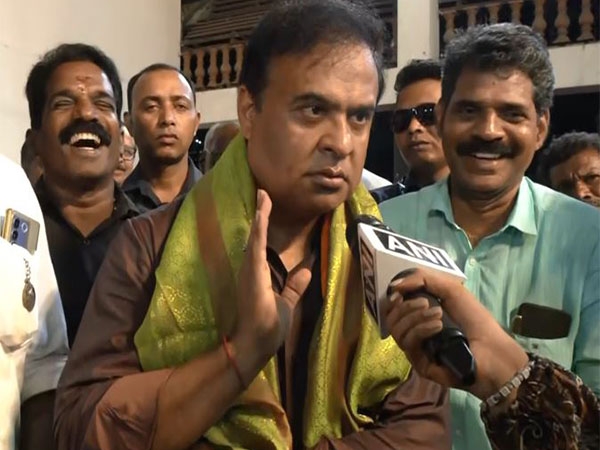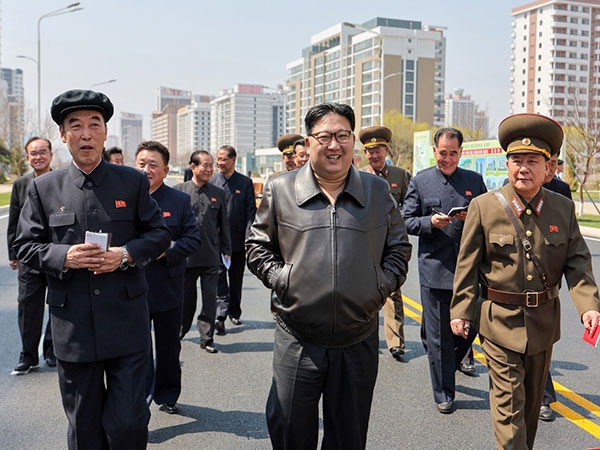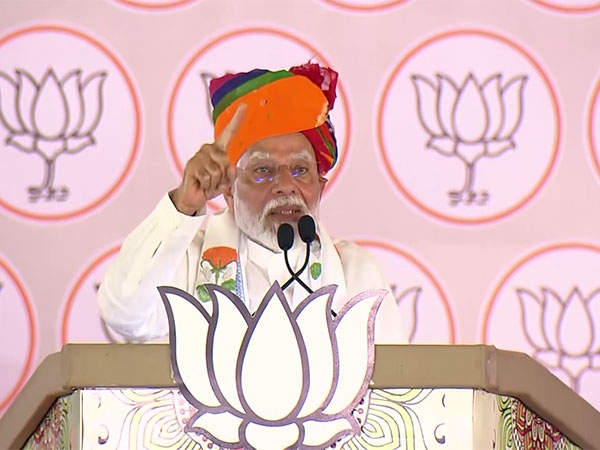India, Pak must talk to revive ceasefire for peace in Kashmir
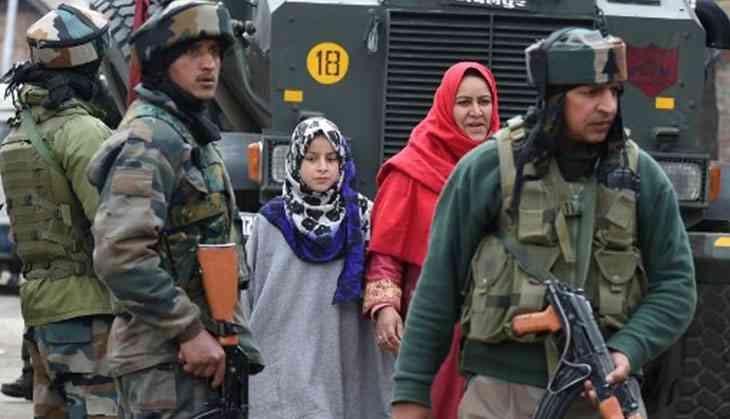
In view of the rise in cross-border firing between India and Pakistan on the Line of Control (LoC) and the International Border (IB) in Jammu and Kashmir, the Concerned Citizens’ Group (CCG) decided to visit some of the affected area and also hold discussions with prominent opinion makers in Jammu and in Srinagar.
The Group comprised Yashwant Sinha (former Union minister for finance and external affairs), Air Vice Marshal (Retd.) Kapil Kak, Sushobha Barve (executive secretary, Centre for Dialogue and Reconciliation) and Bharat Bhushan (journalist). Wajahat Habibullah was unable to join due to pressing personal commitments. Yashwant Sinha was unable to accompany the group to Srinagar and Uri.
The primary rationale of the visit was the escalation of cross-border shelling which assumed a new intensity since the beginning of this year. The ceasefire understanding reached between the two countries in 2003 was violated with impunity with small arms fire giving way to heavy mortar and finally, even artillery.
The unusual escalation resulted in a high death toll – the casualties in January 2018 alone equalled the figure for the entire 2017. And 2017 itself was an exceptional year for ceasefire violations, as they represented a six-fold increase compared to 2015.
The huge collateral damage to civilians living on both sides of the border was therefore also not unsurprising. On the Indian side alone more than 40,000 civilians had to be evacuated, make-shift camps set up to house them at a safe distance, economic activities disrupted and schools closed in the areas adjoining the IB/LoC. Besides the loss of human lives, houses were destroyed and damaged, cattle killed and injured and local water and electricity infrastructure disrupted.
The group believed that the situation in Jammu, fast deteriorating into a communal divide, also needed to be looked at. The rape and brutal murder of an eight-year-old Muslim Bakkarwal girl, Asifa, was being used to fan communal passions by local politicians.
Within the Kashmir Valley, despite the success of the security forces in eliminating top militant leaders, the recruitment to the militant ranks was on the rise with even highly educated youngsters choosing to pick up the gun. Militancy in the Valley also seemed to be changing qualitatively with fidayeen attacks taking place. Suicide attacks were unknown in the Kashmir Valley earlier.
People have been making a connection between the heating up of the LoC and terrorist attacks in the state by terrorist proxies of the Pakistan Army. The argument goes that by using terrorist proxies, the Pakistan Army distances itself from terrorist attacks and pays no price for its subterfuge. The ‘robust’ response of the Indian Army this time around, it is said, is meant to punish the other side by specifically targeting Pakistani Army posts.
Militancy in the Valley, however, also seems to have developed an autonomous raison d’etre in the absence of any political dialogue. The group wanted to understand the changes that had taken place in the Valley since its last visit and understand whether there were any moderating influences that could prevent youngsters from taking up the gun.
Areas visited
In Jammu, the group visited the affected villages of Bera, Jeora Farm, Kapurpur on the IB (Pakistan calls it ‘Working Boundary’). It also visited the Suchetgarh Border Post on the Jammu-Sialkot Highway, following a flag meeting between Pakistan Rangers and the Indian Border Security Force.
The next day the group visited one of the villages on the LoC called Ganiah in Nowshera sub-division of Rajouri, which had witnessed frequent cross-border shelling. It also met villagers evacuated from some other villages adjoining the LoC – viz. Khamba (Jhanghar), Sair Makri, Kanet, Sarya and Anwas-Bhandar. The evacuated villagers met the group in a delegation led by the “LoC Border Migrants Committee” at Nowshera. The group also had discussions with prominent citizens of Jammu on the prevailing situation in the state.
The group also made a visit to Uri and met people evacuated from the villages adjoining the LoC in the Haji Pir sector. These villages included Churanda, Hathlanga, Saura, Sillikot, Tillawadi, Balakot and Garkot.
In Srinagar, the members of the group met Lt. General AK Bhatt, 15 Corps Commander, some prominent representatives of trade and business, a group of public intellectuals, and a member of the J&K Legislative Assembly.
Cross-border shelling has devastated lives
The CCG was shocked to see the devastation caused by the increased frequency and intensity of cross-border shelling. While the resilience of the border villagers who are collateral victims of the increased tension between the two countries is remarkable, it was shocking to find that no long-term strategies were being devised to alleviate their suffering. Even the short-term measures seemed ad hoc and patch-work at best.
The inhabitants of the border villages deserve to live in peace and security like their compatriots elsewhere in the country. However, they seem to have become itinerant migrants in their own country – evacuating their homes periodically to live in make-shift camps with their livelihoods disturbed by the deaths of their family members, losing limbs and getting wounded, their homes and hearths destroyed by the shelling, their cattle killed and maimed, and their children’s education disrupted.
These 'migrants' whether they are on the International Border or on the LoC have certain clear political views and equally clear messages for the two governments. They also have specific demands which need to be taken into account by those who take them for granted as routine victims of the hostility between India and Pakistan.
The CCG was also disconcerted to find that while the situation in the Kashmir Valley had deteriorated further, even the peace in Jammu had become fragile. It was concerned that Jammu was being communalised for narrow political gains by certain political groups and forces. In addition, the specific issues concerning the displaced community of Kashmiri Pandits as well as the refugees from West Pakistan who came to Jammu in 1947 were not being addressed adequately.
Villages adjoining IB in Jammu region
The entire length of the IB and the LoC is fenced. However, intruders from Pakistan slip into India in connivance with Pakistani security forces either by cutting the fence, damaging the fence by firing or using fenced areas which get washed away by floods.
This time around the IB has seen greater shelling by Pakistan than earlier. Experts ascribe the intensity of firing to both calibre escalation – with larger calibre weapons being used – and revenge escalation. When India pounds Pakistan from LoC areas where it is better placed militarily, Pakistan retaliates from its advantageous positions on the border. Strategic Affairs experts claim that the Jammu border also becomes hot because Pakistan knows that the border villages around the IB and LoC segment in this region have a significant number of Hindu population – if they force the migration of Hindus from the border villages, it hurts the government in power politically.
However, the prevalent view is that in most cases the damage caused to the border villages is collateral and most of the cross-border shelling is primarily aimed at the border posts of the two sides. Mortar shells are not precision-guided and it is the shells that go astray which hit the villages adjoining the border or the LoC.
Whatever be reasons for either side heating up the border or the kind of ammunition and weapons used, it is the villagers who live in the adjoining area who suffer.
The villages abutting the IB in Ranbir Singh Pura (RS Pura) are almost used to mortar shells hitting their homes. There are any number of houses with walls pock-marked by shrapnel in these villages. In one such village, Bera, a young farmer had died while he had gone to his fields when a mortar shell hit him. The CCG members were also told that about 50 unexploded shells were still lying around in and around peoples’ homes – the Bomb Disposal Squad of the J&K police had not had the time to defuse them and remove them safely since January this year.
The exchange of fire across the IB has been particularly severe in 2017-18. Locals say that the cross-border firing mostly used to take place in September-October every year and mostly at night. However, this year the firing has taken place in January also and during the day.
Death can come to these villagers unannounced. Earlier, the villagers used to evacuate their homes at night and come back to tend to their farms and cattle in the morning. Now with day time firing from Pakistan, even that is not of much help. People can die while doing the most mundane things – during their morning ablutions, while praying, working in their fields or even just loitering in the streets.
The cross-border firing has been so intense this January that many villagers complained that they could not even cremate their dead locally and had to take the bodies all the way to the Ranbir Singh Pura crematorium.
In some other villages like Jeora Farm, which is barely 100 metres from the IB, while no villagers were killed, the death toll of cattle – buffalos, horses, sheep and goats – has been huge and economically crippling for the local Gujjars. In this predominantly Muslim village, most people rear animals and house them in thatched mud-walled cattle sheds. More than 200 cattle have been killed in the cross-border shelling over four days from 19 to 23 January 2018. In addition 24 thatched houses have been destroyed and 27 damaged. Since then, most villages spend the night in a make-shift camp at Chakroi at a safe distance from the border. They go back only during the day to look after their cattle.
There are two community bunkers in the village built by the state government. They are meant to shelter villagers during cross-border shelling. However, these are used only at night by 6-7 villagers who stay back to guard their property.
Situation in Nowshera
The situation on the villages adjoining the LoC in the Jammu region is much worse. Unlike the villagers adjoining the IB villages, this area seems to have seen much more frequent cross-border firing. These villages have been subject to intermittent shelling in the months of March, May, June, July, August and December 2017. They were shelled once again quite intensely in January and February 2018.
The group visited Nowshera, which accounts for a 68.5 km of the LoC. According to the district administration, 23 out of the 59 villages in the Nowshera sub-division are situated adjacent to the LoC. Since 2016, in Nowshera 12 of these villages with a population of about 13,100 have been severely affected by shelling from across the LoC.
The villages where there has been a loss of human lives and which have witnessed property and cattle damage are: Khamba, Sarya, Bhawani, Kalsian, Manpur, Dhanka, Bhojnava, Kalal, Khori, Ganiah, Pukharni and Anwas-Bhandar. Of these, four villages – Khamba, Bhawani, Sarya and Anwas Bhandar – are beyond the fencing on the LoC.
The details of the damage suffered by these villages are considerable. There have been four deaths, eight villagers have been injured, 124 houses damaged, 189 livestock lost and 189 injured, three school buildings destroyed, one Panchayat house and one cattle shed destroyed due to shelling from Pakistan. Other collateral damage includes the destruction of water reservoirs and distribution system, transformers, electric poles, conductors, insulators, transmission lines and cables. Several heaps of stored grass have also been burnt.
The villagers have been evacuated to make-shift camps being run in government schools at a safe distance. There are six such camps in Nowshera and an additional 44 camps have been kept ready in case the situation on the LoC deteriorated further.
The district administration has done an excellent job of providing basic facilities -- conveyance, boarding, proper accommodation, food and other essentials, medical care, potable water as well as uninterrupted water supply for other daily needs and sanitation for the displaced villagers. However, this clearly is not a permanent solution.
Situation in Uri
The villages adjoining Uri had been peaceful for the last 8-10 years. However, this year Uri has seen several ceasefire violations. Truth is the first casualty on the LoC when ceasefire violations take place. Each side blames the other for starting the shelling.
However, many local observers claim that the cross-border firing in Uri is a response to Pakistan’s shelling in Poonch, Rajouri and Ranbir Singh Pura. They surmise that the immediate provocation for the heavy exchange of fire across the LoC in Uri on February 20-24 was the killing of a Border Security Force trooper on 20 February in the Tangdhar area of Kupwara district by Pakistani firing. India is believed to be at a distinct military advantage on the LoC segment in Uri.
According to local officials, no artillery was fired from the Pakistan side in the Haji Pir sector in Uri this time around, although artillery has been used by them in other areas on the LoC. The villages in this sector have been hit only by heavy mortar shells. The Indian Army, however, is believed to have used artillery to respond to Pakistan.
Some of the villages adjoining the LoC, especially close to the Haji Pir nullah, are beyond the border fencing on the Indian side. These include Churanda, Hathlanga and Saura which are entirely beyond the border fence and others like Sillikot and Tillawadi lie on both sides of the fence. Most of the inhabitants of these villages are nomadic herders and their grazing ground lie inside the fence - ie towards Uri. The border fence is gated and these gates remain open during the day from 9 AM to 5 PM.
These people live under constant fear of becoming collateral victims of any exchange of fire on the LoC. Besides, the border fence is locked down during the shelling and this traps them in the direct line of fire. The gate in the fence itself is made a target by the Pakistan army during cross-border firing, making it impossible for anyone to open the gate and allow the villagers to move to safer areas. The distance between some of these villages on the Indian side and those on the Pakistan side is often as little as 20 metres.
In Uri, about eight villages housing about 7,000 people have been affected by the cross-LoC firing. About 1,500 people from these villages have been evacuated. While nearly half of them were put up in rehabilitation camps at four educational institutions in Uri and NHPC quarters in Kanderwan, the rest found shelter with their relatives in the area.
The CCG members met several villagers from the villages which have been evacuated frequently – in 1992, 1997 and then now in 2018. They claimed that this time around there were no casualties but that a woman had been injured due to shelling and about 30 houses in Churanda, 22 in Sillikot and 2 in Tillawadi had been damaged. A few animals have also been reportedly injured. However, a detailed assessment of property damage by the district administration was yet to take place due to the ongoing stray exchange of fire when the CCG members visited Uri. In the past, several people have lost their limbs in the shelling but fortunately that has not happened this time around.
Most villagers have no complaints against the Army, dependent as they are on it for employment as porters, masons and casual workers. They are often also dependent on the Army for medical facilities and food supplies. Most of their land has been acquired by the Army for the construction of border posts and the acquired land adjacent to the ‘Zero Line’ on the LoC has been mined to prevent infiltration. The villagers claimed that up to 2009, they used to be paid rent for the land acquired by the Army but since then all rental payment has stopped.
The district administration says that it has submitted plans to the state government for building 3,500 bunkers in the villages adjoining the LoC in the Uri sector. However, the situation of the villages beyond the border fence is such that building bunkers will not help them. They want land to build homes at a commuting distance from their villages so that they can cultivate their fields, tend their fruit trees and look after their cattle during the day. Most importantly, they want a permanent solution to stop the cross-LoC exchange of fire.
_103279.jpg)
Disruption of school education
When cross-border shelling starts intermittently, the local administration as a measure of abundant precaution shuts down schools in villages adjoining the International Border and the LoC. Often students get trapped in schools when shelling takes place and have to be rescued by special rescue teams. While this may be necessary to ensure the safety and security of the students, it jeopardises their education by disrupting it frequently.
Although the administration does run make-shift schools in the camps housing the villagers and their families, they are also impacted by the disturbed situation. The net result is that the students from the border villages do not do well in their school exams. In the Nowshera sub-division, for example, 71 schools falling within the 0-0.5 km range of the LoC have been shut down. In Uri too LoC village schools have been closed. The same is the case with schools in villages along the IB in Jammu.
These children with frequently interrupted classes then find it difficult to compete with their peers who attend schools that run regularly and on a fixed academic schedule. The net result is that their parents then demand that their disadvantage of being from border villages be taken into account to give their children ‘grace marks’ to pass their exams. This obviously cannot be the long term solution to the problem of frequently disrupted classes and shifting schools.
Compensation for ‘collateral damage’
In case of death due to cross-border shelling, the locals get compensation of Rs 5 lakh each from the central and State governments and Rs 1 lakh from the Red Cross. The family of the diseased has the choice of not accepting monetary compensation and opting instead for a government job for the next of kin of the dead under the state government’s Special Rehabilitation Order (SRO). For those who are wounded, the maximum compensation is Rs 75,000 per person with the minimum being Rs 5,000.
After the visit of a team from the Union Home Ministry in November 2017 to J&K, the compensation rates were revised under the State Disaster Response Fund or SDRF. These rules have been applicable since December 2017. According to the revised scheme; the compensation for animals killed is fixed based on the type of animal eg Milch Buffaloes are compensated at Rs 30,000 each, the other – non-milch, at Rs 25,000 each, goat at Rs 3,000 each, sheep at Rs 4,000-6,000, and chicken at Rs 80 each.
There is no limit set for the compensation and individuals can get compensation for each animal/bird killed. The group met a villager who had lost 15 buffalos in the shelling overnight at Jeora Farm who claimed that a buffalo costs between Rs 1 lakh to 1.5 lakh in the market. Even if this is an exaggerated estimate, his compensation of Rs 30,000/per animal is unlikely to put him on the path of economic recovery.
Demands of IB/LoC villages
The primary demand of the villagers in the border is that India and Pakistan should resolve this issue through an immediate dialogue.
Time and time again the villagers told the group that “either resolve this through dialogue or through a decisive war which settles the issue once and for all (‘aar-paar ki ladai’).” This is not a call for war but a reflection of their desperation and helplessness where they become involuntary victims of the conflict between the two countries.
There are mature voices also among the residents of these border villages. Many believe that war is no option. “Don’t give ‘munh-tod jawab’ (jaw-breaking reply) to Pakistan from here because then we, who live on the border, are the sufferers. Give a tough reply from Delhi or Mumbai,” one of them said. Another said: “We think that the solution to this problem is ceasefire. India and Pakistan should come to an understanding on maintaining peace on the LoC as they had done earlier. That worked for a decade or more. But for that they have to sit across the table as in today’s day and age it is impossible for either side to capture and hold onto the territory of the other. Stop tough talk with mortar shelling, talk to each other.”
However, their immediate demands can be summarised as follows:
- Allotment of land for housing at safer place but within commutable distance of their villages.
- Build individual (family) and community bunkers in the villages along the IB and the LoC.
- Prevent loss of education of children by providing hostels and schools for them at safe places.
- Encourage and facilitate NGOs to adopt border children who are bright or who have been orphaned due to the shelling and underwrite their educational expenses. Some of the orphaned children have been forced to give up school and become shepherds with no adult guardian to look after them.
- Under a special education plan provide ‘grace marks’ to border village children whose education has been disrupted.
- Hold a special drive for recruitment of border youth in the Indian Army, paramilitary forces, and in state government jobs.
- Issue ALC (Actual Line of Control) certificates to residents of all villages adjoining the LoC without bureaucratic delays. This would enable their residents to access the benefits due to them.
- Provide cash assistance and relief to border migrants over and above that available in the case of death and injury under the State Disaster Relief Fund.
- Write off the bank loans of those whose houses have been destroyed or those who have suffered loss of business (cattle rearing, dairy, etc).
- Set up a permanent institutional mechanism comprising designated teams for damage assessment due to cross-border firing.
- Increase the compensation for loss of cattle to market rates and not at a flat Rs 10,000 per cattle death.
- Shorten the time taken to pay out cattle death compensation as at present processing takes up to three years.
- Provide crop insurance in the border villages under Pradhan Mantri Fasal Bima Yojna (PMFBY) as they suffer recurrent loss of crops due to the shelling.
- Hasten the process of paying compensation to those border villagers who came as refugees to these villages in 1947 as most of them have not been paid the Rs 5 lakh compensation due to them.
- Provide electricity, roads, and schools in the border villages which still remain bereft of them.
Jammu threatened by communalism
People in Jammu felt that the exchange of fire on the IB and the LoC should not be seen as localised activity and emphasised that it had wider ramifications for the state. When violence erupts in the Valley, Jammu does not remain untouched and the reverse can also be true.
The wider contours of the India-Pakistan conflict, they said, had started impacting individual thinking and perceptions besides the direct impact it has in the border areas. There was a general consensus that when no dialogue seemed possible between India and Pakistan, civil society organisations had a role in taking initiatives to address the issues confronting the people and mere Pakistan-bashing was not going to help.
More importantly, there was perception among the local citizens that in the coming days the situation in Jammu was likely to become difficult to handle. The growing disappointment with the state government and increasing communal divide could make the situation in Jammu quite provocative. The Kashmir Valley has been on the boil off and on but the Jammu region becoming politically volatile is a new phenomenon.
The religious divide in the state has clearly been deepened in recent years as communalism has taken deep roots. People point out that even the Courts in Jammu and Kashmir are divided – the two benches in Jammu and Srinagar gave differing rulings on unfurling of the state flag, for example. This has caused fissures in the state’s social stability.
The latest issue that has flagged the rise in communalism in Jammu is the brutal rape and murder of an eight-year-old Muslim Bakkarwal girl, Asifa, in Kathua allegedly by a Hindu. The attempt apparently was to frighten and evict the nomadic Bakkarwals from the land they occupied. Some local leaders of the Bharatiya Janata Party (BJP) along with an outfit called the Hindu Ekta Manch have taken out public rallies with the tricolour in hand shouting slogans which suggest that Muslims are pro-Pakistan and need to be dealt with swiftly.
A prominent local Muslim businessman summed up how he felt saying, “I belong to Jammu and have never felt unsafe here. But now even I have started feeling insecure. What am I to make out of the Hindu Ekta Manch taking out a protest march waving the national flag over the Asifa rape case shouting: “Those who want Pakistan will be sent to Qabristan (burial ground)? The only person who needs to be sent to Qabristan is the rapist. Even in the case of a rape, we are totally divided. This is frightening.”
The communal divide in Jammu is being promoted by politically ambitious leaders who are intent on tearing apart the rich and diverse social fabric of the region for their short-term political benefits. Some prominent citizens, however, lamented the fact that local civil society organisations had not countered the communal narrative surrounding Asifa’s rape and murder. Others said that there was no civil society in Jammu and that the space for civil society’s activities had been taken over by communal politicians.
Not only is Jammu getting polarised communally, even the State Legislative Assembly has been polarised after the terrorist attack on the Sunjuwan army camp. Increasingly the perception is that there is a ‘Hindu Jammu’ ruled by the BJP and then there is ‘Muslim Kashmir’ ruled by the Peoples’ Democratic Party (PDP) – i.e. there is a communal division of labour between the two political allies which govern the state. Many believe that the PDP-BJP government thrives on communal divisions by promoting polarising voices to represent the sentiment in Jammu and in the Valley. This divides and alienates people. This was described as ‘soft separatism’ by a public intellectual.
Many felt that there was a need to contest the separatist narrative or even a communal ‘Jammu narrative’. It was suggested that a beginning could be made not only by civil society demanding justice in the Asifa rape case but also through institutional means such as focussing on school education -- including lessons about local heroes in school curriculum and making school prayers and activities inclusive.
There was local resentment that the central government seemed focussed only on the Valley because of the separatism there and ignored Jammu. The growth in Jammu had become hostage to the concerns about the Valley, they claimed. There were complaints that projects that should have rightfully come to Jammu are implemented in the Valley because the militants there had picked up arms. Whatever be the truth about the causes of resentment in Jammu, what was clear was that the central government needed to pay attention and balance the demands of the people from all the regions of the state – Jammu, Kashmir and Ladakh.
The Kashmiri Pandits would like to go back to the Valley but have no homes to go back to as their homes are either sold or badly damaged. Although the Kashmiri leaders know these facts; they insist that Kashmiri Pandits must go back to their original homes. As a result their issue remains stalemated. Kashmiri Pandits who had gone back to the Valley after taking up government jobs under Prime Minister’s Employment Scheme apparently were under pressure, not from the locals, but from their kin in Jammu to return.
However, were there to be second migration of these Kashmiri Pandits from the Valley, the crisis in the state may become even more intractable. It would seem that Kashimiri Pandit politics has become quite complicated and there was a need to understand how their issues could be resolved through amicable political methods.
The representatives of the West Pakistan refugees argued that there was an urgent need to address their issues too. They are not ‘state subjects’ and are therefore denied certain rights that other inhabitants of the state enjoy. They cannot get employment with the state government, they cannot buy or own property and their children cannot get government scholarships.
Although they have been given limited rights to access education and health facilities, they essentially remain lesser citizens of the state. Their problems seem so intractable within the framework of Jammu and Kashmir’s special status within the Indian Constitution that no government has addressed them with any seriousness.
There was unanimity on arriving at a consensus for resolving problems afflicting Jammu and the need to find a set of actionable issues on which there was a general consensus. On its part, CCG offered its services to civil society organisations in Jammu for extended discussions on the issues affecting the people and to identify the way forward.
Kashmir situation deteriorating
There was growing feeling in the Valley that politics had not worked in the state and that ceasefire or the lack of it made no difference.
The hopes of the Kashmiris in Prime Minister Narendra Modi seemed to have been dashed. They had thought that he would carry forward the initiatives of former Prime Minister Atal Bihari Vajpayee. However, now they felt that he has brought nothing but despair and disappointment in Kashmir.
As a result, the constituency for peace and peace-building through confidence-building measures (CBMs), elections and dialogue, has been eroded. Now even to suggest the use of these instrumentalities for peace is to invite derision. Despite its earlier enthusiasm, the local citizenry does not now place much faith in the frequent forays of the Home Ministry’s special interlocutor to the state.
In effect, the Modi government’s policies have pulled the rug from under the feet of those who did not support militancy, violence and radicalisation. It is this all-prevailing desperation that has given rise to militancy and people accepting the use of violence by youngsters. In South Kashmir the perception is that every youngster is a militant – the only difference is that some are armed and others unarmed. Militancy has also now spread to Srinagar.
As for the Modi government’s Kashmir policy, there is a feeling that since it is unable to control terrorism, it wants its constituency to feel that India is effectively replying to Pakistan which is projected as the root cause of all problems in Kashmir. Under these circumstances the locals have internalised the fact that while violence in Kashmir will wax and wane, politically nothing will happen to address their concerns.
What also seems to have added to the despair of Kashmiris is that they see little support from the Indian mainstream intellectuals and opinion makers. Even those who were never influenced by Pakistan see little hope when they look towards Delhi.
The net result is that the social base for a robust relationship with rest of India has shrunk. This has also impacted the younger generation as they do not view any dialogue with Delhi with any element of hope.
The younger generation of Kashmiris does not have the context of normal situation as they have not seen normalcy in their lives. Those who have seen militancy in the late 1980s and in the 1990s seem more worried today. Almost every youngster in the age group of 13 to 24 seems to be inspired by militant thought even if most of them are not picking up arms as yet.
This inspiration is not coming from Pakistan or its intelligence agencies but from local militant youth icons like the late Burhan Wani and now, Zakir Musa. Unlike in the past there is no moderating influence of parents, other family elders or religious leaders on them.
As the state government is increasingly being seen as an extension of the regime in Delhi, a situation may come when the only link of the state to the rest of India would be through the security forces.
Conclusion
At the end of its fourth visit to the state, the members of the CCG have come to the following conclusions:
- The heating of the border – whether on the LoC or the IB – is pointless. It has not curbed terrorism and nor does it address the issue of growing militancy in J&K.
- Cross-border firing is a sheer waste of resources and unnecessarily endangers the lives of people living adjacent to the border. While we have no idea of the collateral civilian damage on the other side, the scenes of devastation and the stories of lives and livelihoods destroyed on the Indian side are heart-rending. No citizen of India should have to live in perpetual fear and in a traumatic environment as these people do.
- Nobody is winning in Kashmir because of intensified cross-border shelling.
- Both India and Pakistan need to restart the dialogue between them. It is surprising that while soldiers and civilians are dying, the two governments are secretly in touch with their respective National Security Advisors meeting in a third country. The Directors General of Military Operations (DGMOs) of the two countries are also in regular telephonic contact. This is despite the conflict on the LoC and the declaration by India that terror and talks do not go together. Since talks are going on in surreptitious as well as an open manner, it is better that the dialogue is formalised, structured and taken to a political level to make it accountable. The future of India-Pakistan relations must not be made hostage to the political fortunes of any individual or political party.
- The most immediate objective of the two sides should be to stop the shelling on the LoC and the IB. This is not a difficult objective and this had been achieved during the first tenure of the National Democratic Alliance government. The ceasefire proclamation of 26 November 2003 should be resuscitated to make the LoC a line of peace, which is what it was meant to be.
- It is not sufficient for the DGMOs of the two sides to talk on the phone. They must meet and India should not refuse a meeting considering that the last time they met was in 2013. In fact, it might help if these meetings are held frequently so that both sides learn to act with greater restraint.
Lastly, we would like to appeal to the governments of India and Pakistan to come together and take the political initiative for reviving the ceasefire as a first step toward peace. This alone would demonstrate their wisdom, prevent loss of lives of both soldiers and civilians and create the conditions for a dialogue for resolving all bilateral issues amicably.
Yashwant Sinha Kapil Kak Bharat Bhushan Sushobha Barve
First published: 16 March 2018, 17:17 IST

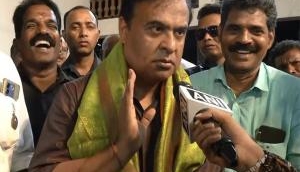
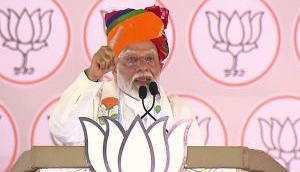
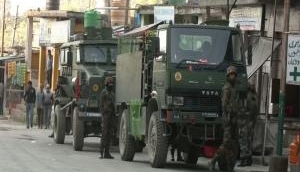
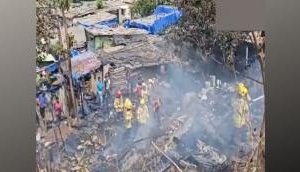
![BJP's Kapil Mishra recreates Shankar Mahadevan’s ‘Breathless’ song to highlight Delhi pollution [WATCH] BJP's Kapil Mishra recreates Shankar Mahadevan’s ‘Breathless’ song to highlight Delhi pollution [WATCH]](http://images.catchnews.com/upload/2022/11/03/kapil-mishra_240884_300x172.png)

![Anupam Kher shares pictures of his toned body on 67th birthday [MUST SEE] Anupam Kher shares pictures of his toned body on 67th birthday [MUST SEE]](http://images.catchnews.com/upload/2022/03/07/Anupam_kher_231145_300x172.jpg)


